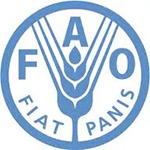Promoting Healthy Food Choices in an Office Cafeteria
HIGHLIGHTS
- Supporting a healthy food environment for employees is a priority for many institutions, particularly the FAO.
- We partnered with the FAO to investigate food decisions at an on-site cafeteria at its headquarters in Rome and designed an intervention to promote healthier food choices.
- Evidence showed the intervention increased the proportion of healthy foods sold in the cafeteria by 17% after six weeks.
The Challenge
Supporting a healthy food environment for employees is a priority for many institutions. The Food and Agriculture Organization of the United Nations (FAO) places an especially high priority on the on-site food environment, given that part of its mission is to fight malnutrition and support food security.
While FAO had numerous initiatives underway to promote a healthy food environment, our colleagues identified an opportunity to apply behavioral science to influence food choices in on-site cafeterias. We selected a specific on-site cafe at FAO headquarters in Rome—Café Eden—to investigate food decisions and design an intervention to promote healthier food choices.
Our Approach
We identified several behavioral barriers to healthy food choices at Café Eden, including the salience and visual appeal of less healthy options, convenience, and cost. To address these barriers, we recommended altering the placement of healthy options, introducing behaviorally-designed signage, creating a designated “grab-and-go” lane, and offering rewards for healthy choices. We implemented a six-week intervention consisting of placing healthy foods in higher visibility locations and redesigning the signage and menus.
Results
We used a pre-post evaluation approach and found evidence that the intervention increased the proportion of healthy* foods sold in the cafeteria. Adapting the layout, presentation, and communication of food options increased the proportion of healthy foods sold by 17% after six weeks. The ratio of fruit to sweets increased from .29 to .36. The ratio of healthy snacks to sweets and pastries also increased by 5 percentage points.
*While all types of foods can have a place in a healthy diet, in service of this intervention and our testing goals, we, in partnership with colleagues from FAO’s nutrition department, defined “healthy” foods as fresh fruit juices, yogurt, fresh fruit, vegetable-based meals or side dishes, salads, nuts, dried fruit, and water.
Takeaway
Our intervention had a positive impact on food choices at Café Eden and demonstrated the value of low-cost, rapid testing to assess the impact of design features. Displaying larger quantities of healthy foods and using multi-pronged behavioral designs increased the likelihood of picking healthy options. FAO looks to build on this experience and expand the application of behavioral insights and rapid, low-cost testing across its internal operations and field-based work.
Interested in learning more about this work applying behavioral science to a crucial social problem? Reach out to us at info@ideas42.org or tweet at @ideas42 to join the conversation.
Partners










